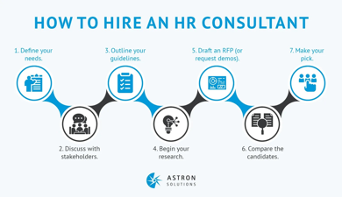
Imagine a star employee unexpectedly submits a resignation letter. During their exit interview, you ask the employee why they’ve chosen to leave your organization.
“I love this company and the work we do here,” the employee says. “But I feel like there’s no clear path forward here for my professional growth, though I’ve tried to discuss my options with my manager and HR many times over the years. I’ve taken another position that will allow me to do more with my skills and open the doors for new opportunities.”
This anecdote goes to show that even if you’re compensating your employees fairly, doing everything you can to avoid the emergence of a toxic work environment, and helping people find meaning in their everyday work, you may still be at risk of losing great employees.
This is because top performers resist stagnation. They want to progress and move forward in their careers. To retain them, you need to provide them with clearly stated career pathing opportunities so they understand that your organization is the place where they can achieve their professional goals.
Let’s look at how you can promote employee growth (and, consequently, retention) through career pathing.
What Is Career Pathing?
Career pathing—sometimes called career mapping or career development planning—refers to the process of working with individual employees to determine how their career will progress at your organization.
This involves discussing employees’ goals and making a plan for the training and skill development needed to achieve those goals. Note that this won’t always involve employees working toward vertical professional growth (i.e., climbing the corporate ladder to work toward a leadership position). It also can involve horizontal professional growth—moving to another department or position, for instance.
Some organizations may make the mistake of neglecting career pathing for the sake of focusing on everyday operations. But career pathing offers several benefits for both employees and organizations:
Career Pathing Benefits for Employees
- Clarity about their professional future at their current organization
- Opportunities for continuous skill development and learning
- Boosted motivation and job satisfaction
Career Pathing Benefits for Organizations
- Improved recruitment and retention
- Increased employee engagement, productivity, and loyalty
- Better retention of institutional knowledge
- Easier succession planning
These benefits are mutually reinforcing and create a snowball effect. For instance, improved engagement leads to better retention and a stronger employer brand for recruitment. All of these benefits mean career pathing holds the potential to lead to long-term success for both you and the employees who work for you.
4 Steps to Effective Career Pathing
Once you decide to embrace career pathing at your organization, you may find the process a bit challenging. After all, each employee’s career path will be unique to them, their interests, their goals, and their strengths.
Let’s take a closer look at the steps you need to take to create effective career paths for your employees:
- Identify potential career options. First, identify the career or growth options you’ll present to your employees. These should be aligned with your organization’s values and needs, and also should take into account your goals for the future. For instance, you might identify opportunities for management positions or becoming subject matter experts. However, if you decide to offer a career option that is still in the process of being built out or will be available down the line as your organization scales up, be prepared to communicate that to your employees. For instance, you might say, “While we would like to develop a full-fledged marketing department in the next three to five years, we can’t guarantee a management position in that area will be available soon.”
- Assess employees’ skills, interests, and aspirations. Next, meet with your employees. Discuss their current performance at work, the skills and specialties they bring to the table, and what their interests and aspirations are. Together, you’ll determine which career options would be the best fit for them as individuals. For instance, say you have an employee at your nonprofit who is adept at communicating and laying out cases for support for your projects and campaigns. Together, you may consider how those skills could translate into successful grant writing or a position on your development team.
- Develop individual career paths. Once you and your employee know where they want to go, make a plan for getting there. Identify what training, mentorship, and experiences they’ll need to reach their career goals. According to Astron Solutions, you can use job descriptions to determine what employees need to do to qualify for new positions and succeed in them. Just remember to be clear that responsibilities may evolve over time as positions are updated or created for the first time.
- Track progress and adjust plans as needed. As employees actively begin pursuing their goals using their individual career paths, make sure to check in frequently and track their progress. Keep the plan flexible, and be ready to adjust timelines or targets as needed so employees still have the capacity to excel in their current roles.
As career pathing becomes the norm at your organization, make sure to share examples of employees who are successfully navigating their career paths and have reached notable milestones in their growth. While you’ll want to highlight the achievements of individual employees, be sure to also emphasize their impact and how their new skills have benefited your organization. This will inspire other employees to envision their futures at your organization and get started on their own career paths.
How an HR Consultant Can Help
A Human Resources consultant is an expert in HR management who provides services and solutions to organizations that need strategic support. A consultant can help your organization audit and improve its existing HR practices and policies, improve employee communication, develop a compensation strategy, and more.
When it comes to career pathing, a consultant can be an excellent resource. Experts can help you build out your policy and procedures for creating individual career paths, and they’ll bring an outside perspective on the importance of performance management and talent development to the table. They can help you balance individual goals with your larger organizational goals and create a sustainable, effective career pathing program.
If you think your organization is ready to start designing career paths with the help of an expert, follow these hiring tips from Astron Solutions’ guide to working with an HR consultant:

- Define your needs, including any goals and needs beyond career pathing, such as the need to revamp your compensation strategy or create an employee recognition program.
- Discuss with stakeholders, ensuring everyone is on the same page about the need to hire a consultant.
- Outline consultant hiring and engagement guidelines, such as the budget you have to work with.
- Begin your research to identify consultants you want to work with, remembering to ask trusted colleagues in your industry or sector for recommendations.
- Draft a request for proposal (RFP) to communicate your needs and goals to the consultant, also requesting demos of any relevant software solutions the consultant may offer.
- Compare the candidates and submit your RFPs, giving the consultants a couple of weeks to get back to you with completed proposals you can review.
- Make your pick and then sign a contract with your consultant and get to work.
Though you may begin your engagement with your chosen consultant focusing on career pathing at your organization, stay open-minded and keep in touch with your consultant, as you may want to work with them on different projects in the future.
What kind of future does your organization hold for its employees?
Career pathing helps you answer this question and encourages employees to stick with your organization and grow professionally. Use this short guide to get started with career pathing at your organization today, and don’t forget to turn to an HR expert for help if you need it.




